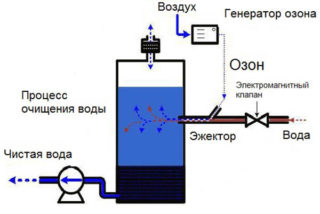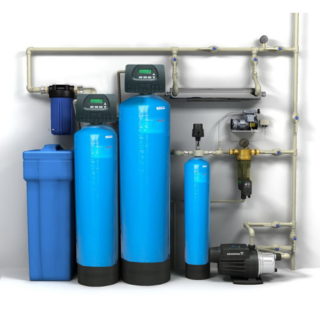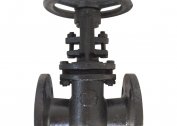For drinking and domestic needs only clean water should be used. With a centralized water supply, these tasks are carried out by specialists. If there is a specific smell of water from the well, emanating by a swamp or hydrogen sulfide, the master must personally take measures. Otherwise, such a liquid with a cloudy coating on top and amber is unsuitable for use.
Causes of Bad Smell
The main reason for the appearance of a marsh stench from water is the decomposition of organic substances in it, their rot. The above substances get there in this way:
- Together with particles of sand seeping into the casing. When silting the bottom of the source, the growth of organic substances in water increases.
- Through the unprotected top of the well / well. Small debris, insects, small individuals of the fauna world (bat, bird) may well get into the column.
- Low intensity of operation of the source. Stagnation of water in it leads to the formation of a layer of sludge from the bottom. From this, a marsh stench may appear.
In all three cases, processes occur in the lower layers of the well in which anaerobic (living without oxygen) bacteria are actively developing. It is they that provoke the appearance of a swamp smell.
Such a liquid when boiling strongly foams.
Can I drink water with a smell
 At least a sharp repulsive aroma simply does not allow a person to consume such a liquid in food. But even if you boil it and thereby eliminate the rotten smell, the water is unsuitable for drinking. A liquid enriched in hydrogen sulfide has the following consequences:
At least a sharp repulsive aroma simply does not allow a person to consume such a liquid in food. But even if you boil it and thereby eliminate the rotten smell, the water is unsuitable for drinking. A liquid enriched in hydrogen sulfide has the following consequences:
- indigestion and, as a result, diarrhea, vomiting;
- severe food poisoning;
- headaches;
- cramps
- nerve palsy;
- pulmonary edema.
The presence of hydrogen sulfide in water greatly complicates the process of iron removal. Therefore, if the master for the well fluid has special filters, they will not cope with divalent Fe in the presence of external gas. However, they will very quickly fail.
Ways to solve the problem
When water from a well smells like sewage, a number of steps should be taken to eliminate the amber. To this end, the cause is first identified. Then the source is well pumped with a powerful water pump. It is advisable to drain, since there is a possibility of pumping out a thick sand mixture from the bottom of the home source. If necessary, change the bottom filter.
If the cause of organic matter getting into the casing is the depressurization of the pipe, it makes sense to mount a narrower polymer barrel into it. Often, masters in this way correct the situation.
Further, to eliminate the pungent odor, they act depending on the available means and capabilities.
Physical methods of water purification

Aeration is the saturation of fluid from a well with oxygen. If anaerobic microorganisms actively live and multiply without it, the enrichment of the water with the desired gas will lead to the neutralization of active processes. The smell of hydrogen sulfide will go away.
Aeration plants come in two types:
- Pressure Oxygen is supplied to the column under pressure. So-called water enrichment takes place. As a result, hydrogen sulfide is displaced and volatilized. They remove gas by this method often at industrial wastewater treatment plants or in domestic flasks-aerators.
- Pressureless. Liquid is poured into the storage tank, as from a standard watering can in the bathroom. When water is enriched with oxygen, hydrogen sulfide is separated from its molecules and escapes into the atmosphere.After the aeration process, bivalent iron precipitates in parallel, acquiring a trivalent form. Oxygen-enriched water can be fed into water pipes.
The main advantages of aeration are that no hazardous chemicals are used to clean the liquid, and the method itself costs almost nothing to the source owner.
The chemical way to eliminate odor
If the water in the well smells like a swamp, special chemicals can be used. Upon contact with sulfur molecules, the latter lose their activity. As aggressive substances use:
- hydrogen peroxide;
- chlorine - its interaction with hydrogen sulfide molecules leads to the formation of colloidal sulfur, which is later removed by coagulation;
- ozone - leads to the formation of an insoluble precipitate and further improves the taste of the liquid;
- sodium hypochlorite;
- iron hydroxide - leads to the formation of suspended particles in water, which settle to the bottom and are then removed by mechanical filtration.
All chemical odor removal methods are difficult to use in everyday life. The difficulty lies in the selection of the correct dosages of reagents for a given volume of liquid.
Sorption-catalytic method
Black activated carbon or wood granular charcoal are good catalysts for getting rid of stench. Water is driven through them, which leads to the oxidation of sulfur compounds. The effectiveness of the method is high. But the main minus of such cleaning is the long duration of the process. It is not very convenient for large volumes of water consumed for domestic purposes.
Special filters with coal loads help get rid of the smell of water from the well. They eliminate rotten amber quickly.
Comprehensive cleaning methods
Even if visually the fluid from the well is clean, but it is clearly noticeable that it stinks, a qualitative analysis should be carried out first. Then choose a complete installation for cleaning. Even in a transparent environment, bacteria, impurities of hydrogen sulfide, iron, nitrates may be present. According to the actual composition of the water, it’s worth picking up and making an integrated installation. As a rule, it consists of the following sections:
- an ultraviolet emitter that kills all microorganisms, bacteria;
- reverse osmosis installation, with which the liquid gets rid of suspensions, dissolved impurities;
- coal-filled flask for high-quality post-treatment.
The sequential passage of water through all sections ensures the complete removal of all visible and invisible impurities, gases, microorganisms from it. The output is a liquid suitable for domestic use.
The main condition for the full-fledged operation of the new integrated installations is the regular replacement of membranes, carbon inserts, and cartridges.
If it is difficult to choose a complex filtering unit even after conducting a water analysis, it is better to trust specialists. Masters working with sewage treatment plants will select the complex in accordance with laboratory parameters of the liquid. In addition, large companies involved in the installation of filters provide a guarantee for all types of equipment and provide after-sales service for their equipment.






